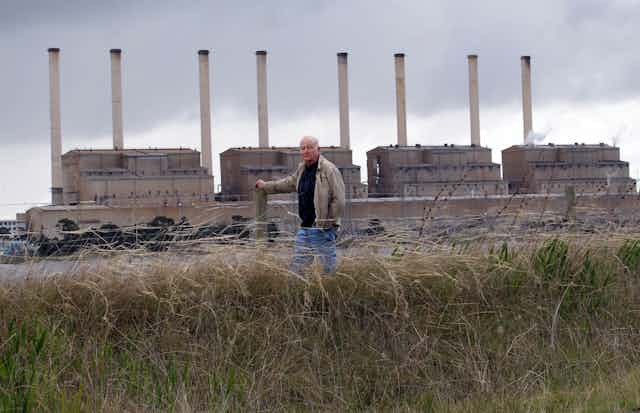The announcement of the closure of Hazelwood power station in 2017 adds further complexity to an uncertain future facing the Latrobe Valley community.
Owners Engie and Mitsui said of the 750 employees at the power station, 250 will remain between 2017 and 2023 to manage the site rehabilitation, while the remaining workers will receive a redundancy package.
The state government has pledged a package of A$22 million for “personalised support” for workers which includes TAFE training, financial counselling and other forms of support and a further A$20 million to set up a Latrobe Valley Authority to lead the economic transition. In addition to this A$224 million will go towards the establishment of a “economic growth zone”.
The federal government is offering A$43 million including A$3 million for active assistance, retraining, and other forms of financial services.
Adversity is not new to this Victorian region. Headed by the towns of Moe, Morwell and Traralgon, this one-time thriving energy generating region has experienced continual power job losses since the 1980s. And despite continued government support, the Latrobe Valley’s economic decline and higher than state average unemployment is yet to be halted.
Fluctuating demand for mining exports and reductions in manufacturing output across Australia require regional areas like the Latrobe Valley to consider their options. A 2016 OECD report states that Australia has a relatively strong capacity to provide new jobs for redundant workers, citing examples of 80% re-employment within two years.
But does this experience hold for regional locations? Looking back, a 2001 Monash University report showed that structural changes to the power industry saw the Latrobe Valley suffer from a loss of almost 10% of its residents, sustained withdrawals from the labour force and unfavourable conditions for local businesses.
Recovery has been slow. Within the Latrobe Valley community, the challenges of reversing economic decline have been exacerbated by recent events such as the Hazelwood Mine fire and the impact of the milk price downturn on the dairy industry. The power station closure had been foreshadowed for some time and further job losses from the power industry will add to community concerns.
There is an emerging gulf in living standards between country and city-based residents. For example, according to a 2011 state government report, regional Victoria is relatively disadvantaged in several ways including lower educational participation and workforce skill levels, when compared to metropolitan Melbourne. In this same report, the Latrobe Valley towns of Moe and Morwell are named among the most disadvantaged localities in regional Victoria.
Those working in the power industry represent nearly 10% of the Latrobe Valley workforce and the announced job losses may add to an unemployment rate, currently standing at 7%.
The immediate focus must be on the welfare for affected employees and their families. In the longer term, this event could be the trigger for new opportunities to revitalise the Latrobe Valley’s economic outlook.
Alternative pathways for economic and community development have been on the agenda for the Latrobe Valley at least since privatisation of the power industry in the 1990s. These include a future economic strategy that supports a more diversified economy.
Lack of real community consultation and engagement has meant that workers perhaps haven’t felt empowered to take up other opportunities.
There are some alternatives that could be taken advantage of, such as new service and manufacturing industries and others that build on the Latrobe Valley’s natural advantages in agriculture and scenic locations. Ideally, these initiatives require focused retraining or other forms of support for displaced workers. But such short-term measures are, of course, obvious.
With the closure of the power station, there will ongoing work for some time as the site moves from a productive mine to rehabilitated site. However there are significant issues that have to be considered first, such as the future use and stabilisation of the site prior to undertaking major works.
Whatever the future of the Hazelwood site, it’s critical that this is determined in consultation with the community to provide access to facilities and services of benefit to local residents. Importantly, as rehabilitation of the site will be a long-term process, it will be necessary that the community contributes both to the vision and the progress toward this for it to succeed.
State and federal governments may look also to other communities that have experienced industrial plant closures internationally to inform their plans and actions.

